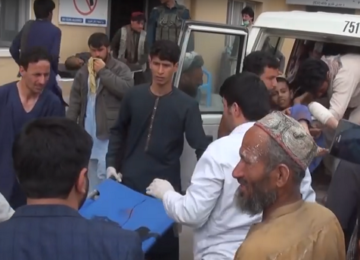The recent lightening defeats of the Islamic State, commonly known as ‘Daesh’ (also referred to as ISIS), in its strongholds in the Middle East has triggered a debate about the future of the militant group that dreaded the world over for its brutality and ferocity. In October, the U.S.-backed opposition forces declared they have routed the group from Raqqa, its Caliphate capital in Syria. The fall of Raqqa came a few months after its de facto capital, Mosul, in neighbouring Iraq.
Hot on the heels of these defeats in the volatile Middle East, the Philippines security forces announced that they had also driven the Daesh-linked militants from their southern bastion of Marawi after a tough battle lasting for four months. Though the group still holds some pockets in Iraq and Syria, with Baghdad preparing to recapture Rawa, the last Daesh-controlled town. However, the caliphate that Daesh’s leader Abu Bakr al Baghdadi established in parts of these countries three years ago has literally collapsed.
The quick reversals of these territorial gains made by Daesh in the Middle East and Southeast Asia were as stunning as its mysterious rise in 2014. However, it is premature to pronounce death of the fierce group. Given the diversity of its ideologically motivated fighters, the group has the potential to re-emerge as a formidable force within the Middle East or open more war fronts elsewhere in the world. The reconstruction of the newly liberated towns and cities in Iraq and Syria is a major challenge for the international community. They have to stop Daesh from staging a comeback in the Middle East, but the efforts to stop its battle-hardened militants to set up its bases elsewhere in the world is much more challenging.
Even before its defeats in the Middle East, Daesh had set up sleeper cells in the West and staged audacious attacks across Europe; which showed the group had spread its tentacles deep into these societies long before. There is a possibility that the group might activate its cells to launch big payback attacks in the West to avenge its humiliating reversals in the Middle East. It does not necessarily need to launch any contact campaign to recruit new fighters. Its propaganda campaign through social media has become such an effective tool that it could inspire and motivate young people to join its cause even without getting in touch with them. Sayfullo Saipov, the 29 year old suspect who carried out the truck bomb on a cycle path in Lower Manhattan, told interrogators that he planned the attack after getting inspired by IS propaganda videos. There is a strong possibility that Daesh fighters in the Middle East, following in the footsteps of al Qaeda in the wake of U.S invasion of Afghanistan in 2001, could fan out its fighters among other troubled spots across the world to avoid complete annihilation.
Since defeat of Daesh in Iraq and Syria, hundreds of its European fighters have returned to their native countries in recent years posing a serious security risk to these countries. However, many more war veterans are feared to be heading towards other volatile regions to continue their fight. Afghanistan offers one of the most attractive destinations for Daesh fighters returning from the Middle East to regroup and reorganize as they already hold large swathes of territory in the war-torn country. Afghan politicians – as well as U.S. experts – still consider Taliban as the biggest threat in the country but Daesh too is emerging as a serious security risk for the war-torn nation.
Just months after Donald Trump was sworn in as the U.S. president, U.S. military dropped “mother of all bombs” on IS bases in eastern Afghanistan, killing scores of its fighters. Followed by this, in June the U.S. forces killed Daesh Afghanistan head Abu Sayed in a strike. However, these setbacks did not dampen the morale of the militant group. The recent spate of big attacks claimed by the IS in Afghanistan show that the militant group is a force to be reckoned with. With political reconciliation in Afghanistan still a far cry, the emergence of Daesh phenomenon could complicate the war on terror for the U.S.-led forces battling a stubborn insurgency by the Taliban, who hold around 40 percent of the country’s territory.
A large number of Taliban fighters went to Syria and many may have joined the Daesh ranks, with their return to Afghanistan further aggravating security situation in Afghanistan. There is also the possibility of Afghanistan plunging into a sectarian war as a large number of ethnic Shi’ite Hazaras from Afghanistan have gone to Syria to fight Daesh. Though Daesh could not find foothold in Pakistan, there could still be many sympathisers for the terror group in the country. Moreover, there is a high risk of educated youth being motivated by the terror group through their sophisticated propaganda machine as happened in case of medical student Noreen Leghari.
In view of these developments, it is important for Afghanistan and Pakistan to forge bilateral cooperation to confront the emerging Daesh threat in the region. During his first visit to Kabul as Army Chief in June, General Qamar Bajwa very rightly offered “security cooperation” to the Afghan government to contain the brewing Daesh threat in the country. If both the countries fail to nip the Daesh evil in the bud, the terror-hit countries run the risk of facing another bout of instability and a more complicated conflict in the region.
The author Zeeshan Haider is a senior journalist based in Islamabad. He tweets at @HaiderZeeshan14 and can be reached at zeesh.haider14@gmail.com.
Disclaimer: Views expressed on this blog are not necessarily endorsed or supported by the Center for Research and Security Studies, Islamabad.








